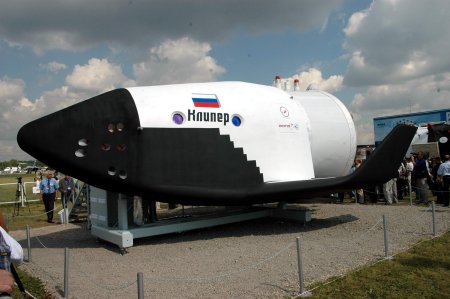Negotiations opened for work on reusable spacecraft’s flightdeck and interior
The developer of the six-crew Kliper reusable spacecraft, Russia’s Energia, has opened negotiations with European and US companies to outfit the vehicle’s flightdeck and interior.
Energia is now the prime contractor for the spacecraft, which would be owned and operated by the Russian Federal Space Agency (FSA). The Kliper’s development has been included in the agency’s 2006-15 space programme. Funding from the Russian state budget will start in 2006.
Energia general director Nikolai Sevastianov told Flight International at the recent MAKS 2005 Moscow air show that he expects to see the Kliper used for “airline-like” operations and space tourism.
“If you are a pilot, and can fly an aircraft, you shall be able to fly Kliper. Instead of tens, the army of space tourists will rise to hundreds,” says Sevastianov. “We will make [the International Space Station] a spaceport. This may lead to a business similar to the airlines. Like Airbus and Boeing, we will be able to sell space vehicles to other countries.”
Sevastianov added that Kliper’s training time will be much shorter and, because of its flight profile g-loads are reduced by two-thirds, he expects more people will be able to fly.
The FSA and Energia are selecting Russian subcontractors as well as Western companies.
So far, Moscow-based research and industrial corporation Molniya has been dropped in favour of Sukhoi for the aerodynamic work related to the winged version. There is also a capsule version of Kliper.
Sukhoi says it will use technology stemming from research on the S-21 supersonic business jet, a next-generation strategic bomber and its shelved T-4 Mach 3 bomber.

The fighter manufacturer has already started working on the Kliper using its own resources, but Sukhoi and Energia expect a public/private partnership to be arranged eventually.
First Sukhoi will receive contracts from Energia and then from the FSA.
The FSA would operate Kliper from its Plesetsk Cosmodrome in northern Russia and possibly the European Space Agency’s spaceport in Sinnamary, French Guiana (Flight International, 9-15 August).
VLADIMIR KARNOZOV/MOSCOW
Source: Flight International























